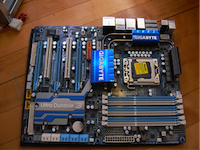How to Scrap a Computer

Photo by: Photo by: José Alejandro Carrillo Neira | Flickr.com
Selling the electronic scrap from your old computer is both an environmentally and financially smart endeavor. Not only can you prevent valuable natural materials (like precious metals) and e-waste from ending up in hazardous landfills, you can earn some quick extra cash.
Scrapping a computer on your own can be a daunting task. Electronics consist of innumerous parts, some of which are tiny, fragile, and/or valuable. To address your scrapping concerns, this basic guide will lead you through taking apart a computer and everything that entails.
You can of course work on your own old computer, but if you’re looking to make the extra buck, you can seek out additional computers. Family, friends, sidewalks, and websites, like Craigslist.org or Freecycle.org, are all excellent places to find electronics that aren’t functional or needed anymore. By purchasing these computers to scrap them, there’s a good chance you are ultimately keeping them out of the trash, and thus, landfills.
The Case
But first things first… When you’ve got the computer (or computers) sitting in front of you, start by getting inside the case. On older models, this involves unscrewing whatever screws are holding it together. Newer models should be easier to open by pulling the case apart. Be careful, as computer frames are often made of metals, like steel or aluminum, and can have sharp edges.
The CPU

Photo by: pasukaru76 | Flickr.com
After the frame is opened up, the first thing to tackle is the wiring. Needless to say, computers run on a lot of wires, all of which need to be disconnected before any parts are disassembled. Some wires, namely those containing precious metals like copper, can be saved and recycled in large quantities. When the wires are out, the CPU and RAM boards should be removed next. CPU, or central processing units, are generally covered by a heat sink made of aluminum, which can also be sold as scrap. Units will have a small lever on the side that must be pulled to pop out. CPU’s contain a lot of valuable gold scrap inside, as well as in the plating.
The RAM

Photo by: Tim Bowers | Flickr.com
RAM, or random access memory, filters and stores data running from the computer’s hard drive to the CPU. RAM also contains gold, as well as tin, platinum, and palladium – all of which are valuable materials. RAM units are held on by small tabs, usually made of plastic, which can be easily released.
The PCI Bus

Photo by: Emilian Robert Vicol | Flickr.com
The next step is removing the PCI boards. This is done by simply pulling them out of the computer. PCI’s are probably the most valuable parts, thanks to the “gold fingers” plated on their bottoms. These fingers should be removed and sold separately, as they have much higher percentages of gold and can sell for more. Cut these apart from the rest of the PCI board as closely as possible and sell them separately.
The Motherboard
The motherboard, the computer’s main and biggest board, is bolted to the case. This should unscrew easily from the frame and contains various metal components that make it valuable. Purchasers will pay a lot for high-grade boards, and if you have a large amount of boards, it may be best to contact an online scrap buyer, like CashforElectronicScrap.com.

Photo by: Heather Greene | Flickr.com
The hard drive is next up, comprising of aluminum, steel, platinum alloys, neodymium magnets, and sometimes nickel. Get the disk drives out too, as each contains a high-grade board (hard drives, too).
All of these components, particularly the gold fingers, RAM, CPU, and other pieces with high gold contents, have high values and can earn you considerable cash. One word of caution: make sure those computers are actually no longer functional, since working parts may be worth more as parts than as scrap.
If you’re looking for a place to sell your scrap parts, CashforElectronicScrap.com accepts printed circuit boards, processors, computer chips, semiconductors, populated circuit boards, gold plated circuit board scrap, and other assorted electronics.




